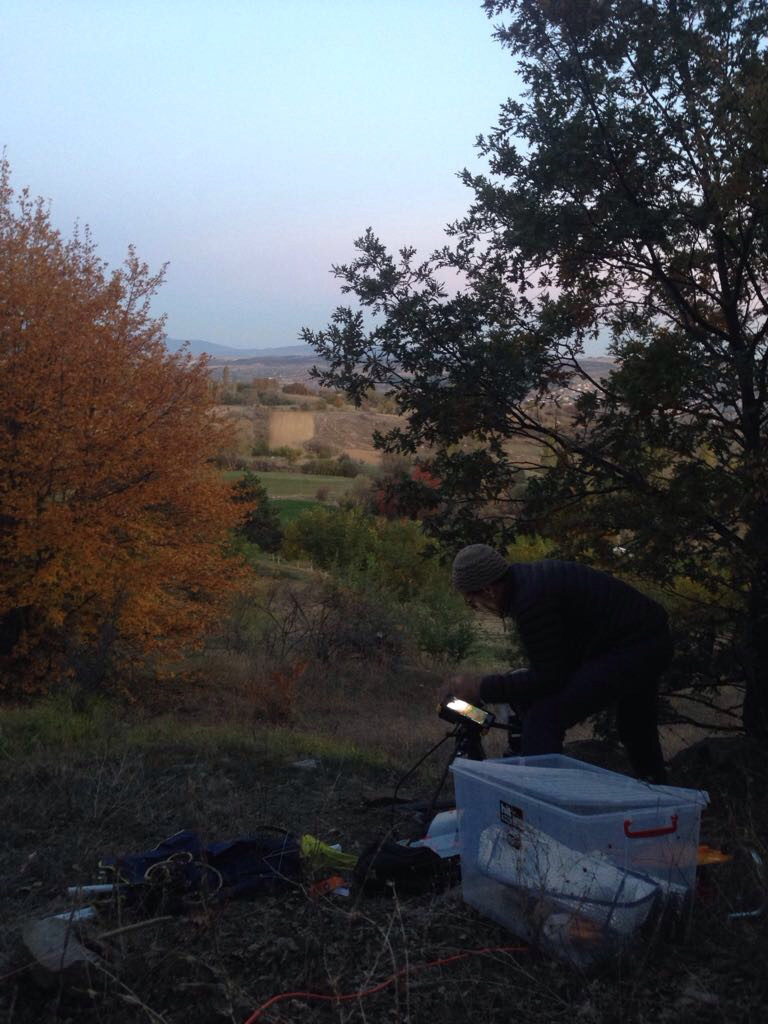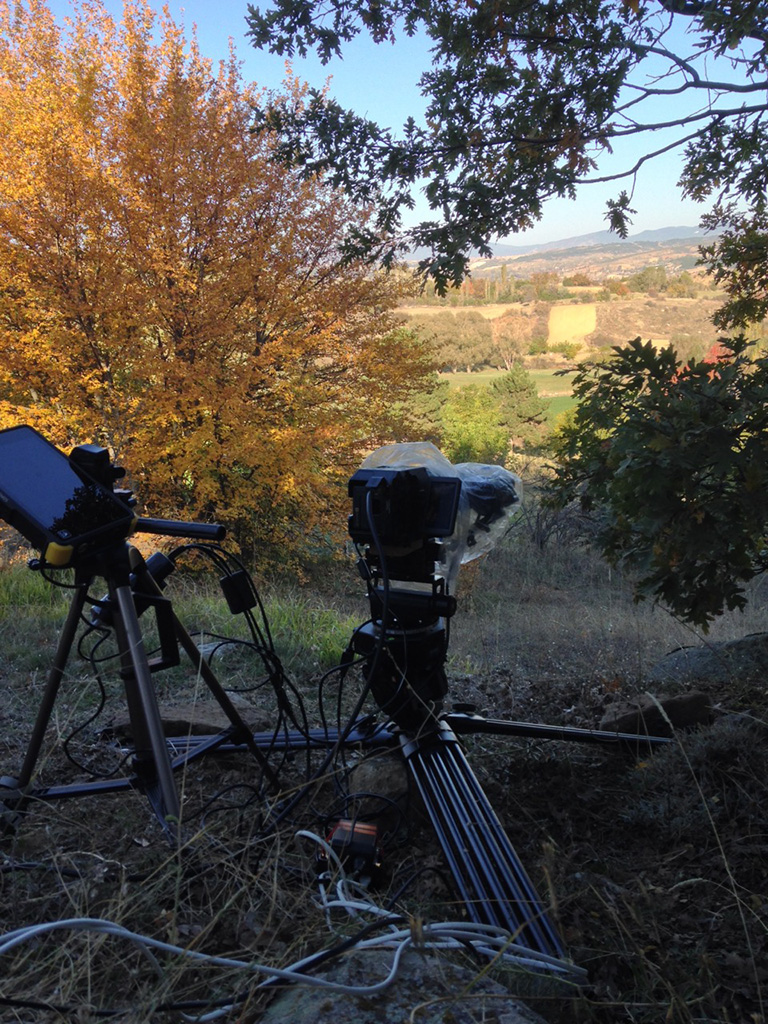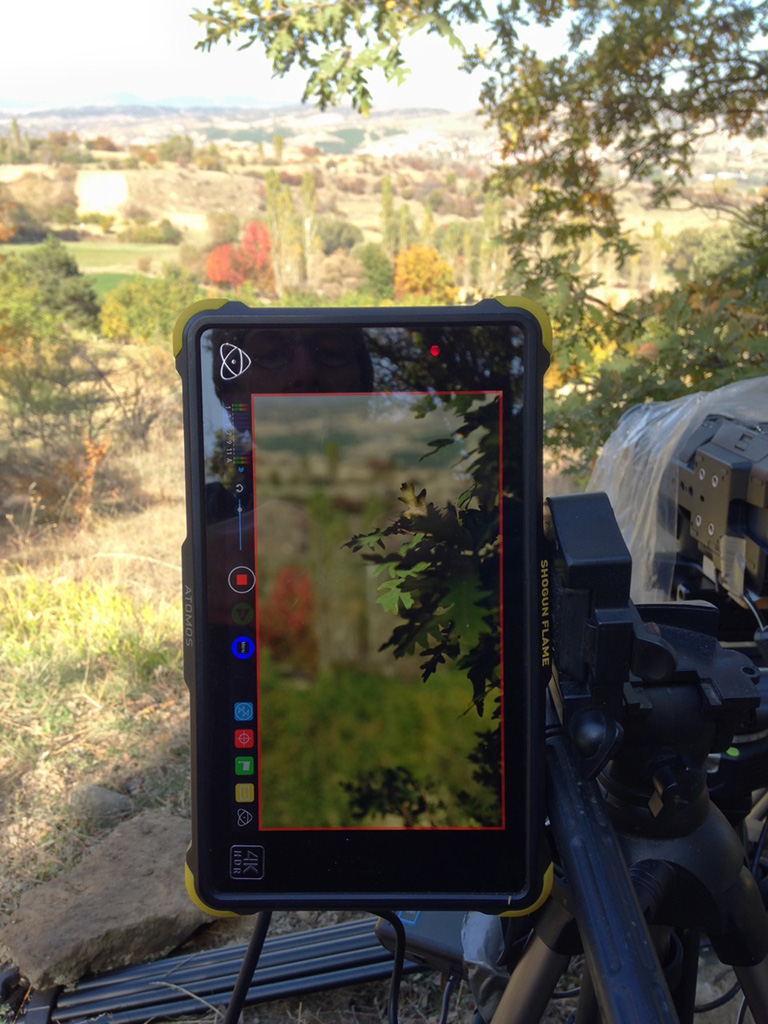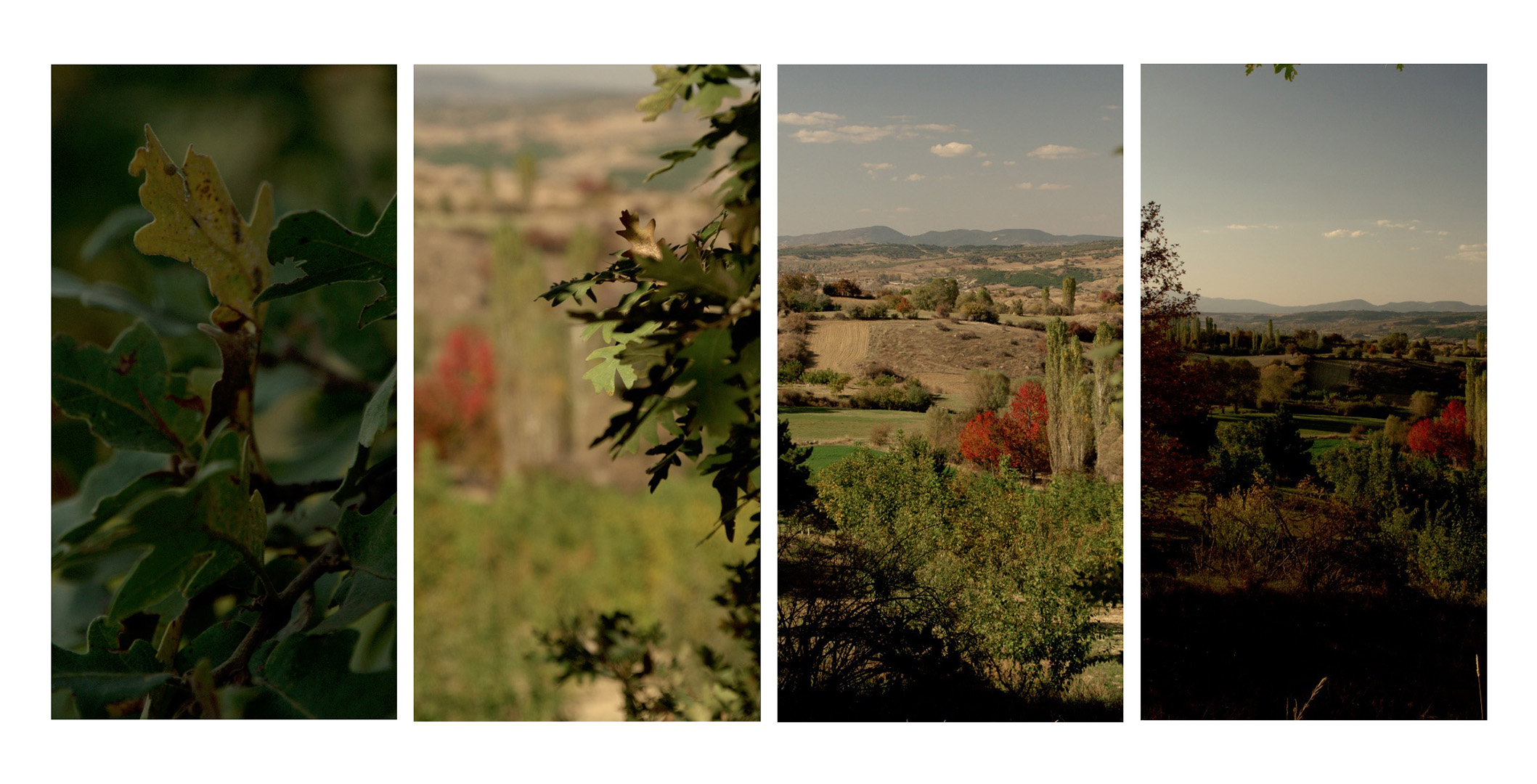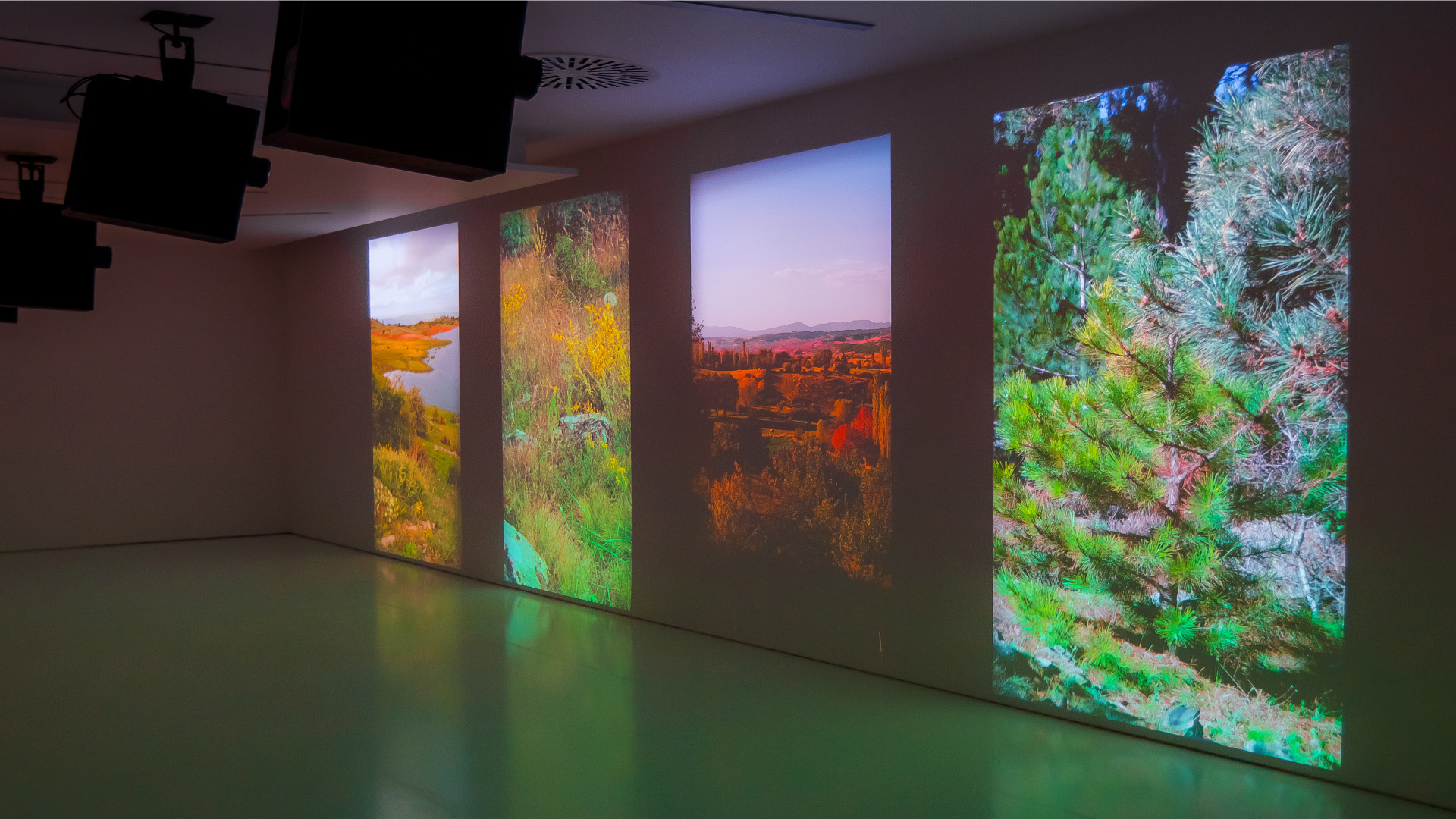Blog
12 Questions to Artists: Jeffrey Blondes
25 July 2019 Thu
Serhat Cacekli asked 12 questions to Jeffrey Blondes.
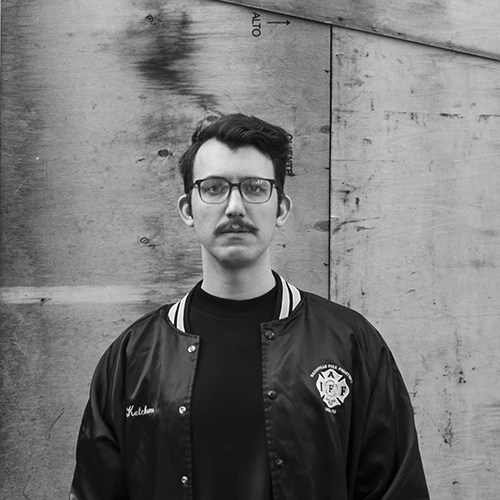
SERHAT CACEKLİ
hscacekli@gmail.com
1- Could you talk about your works included in the Borusan Collection?
I was invited to work in central Anatolia, in Tazlar, by the curator of the museum. There, I discovered a rich and varied landscape and presented a project for the collection that would attempt to capture the passing of time and seasons by using a slow zooming camera that would reveal different aspects of the terrain through four days over the year. Each of the four films begins at sunrise focused very close up on a texture in nature, and ends at sunset after panning and zooming out in a roughly different cardinal direction over the course of the day: North in winter; East in spring; South in summer; and West in autumn.
The camera’s movements are practically imperceptible, and yet, like many things that surround us in nature, if one is patient and slows down enough to pay attention to the subtle shifts, you can, like in meditation, enter an observational state of perception where looking transforms into seeing.
2- What is the most important aspect of this piece that people should pay attention to?
So this piece works on two levels:
Either the viewer slows down and in a contemplative way finds themselves living in nature’s ‘real time’—a feeling that, in fact, feels more like you are moving in slow motion while the world is buzzing on at some faster pace around you. (This is the feeling one often has when they meditate, or watch a fire burning, or waves rolling in on the beach.) In this state, we often have a sense of heightened observation. Our senses are keyed up. We hear, see, feel in a much more intense way. In this state, we can actually watch the image evolve. We see the camera move, the landscape zoom out ever so slowly. It’s like watching the moon rise over trees.
Or, the casual observer passes in front of what appears to be four unchanging images, watches this ‘constancy’ for a moment and moves on. It isn’t until they pass by a second time at some point in the future that they become aware that everything has shifted, that nothing is as it was. They will look again, but of course nothing appears to move. It is as if these windows we look through into this world are magic—static images that never change and yet are never the same when we look a second time.
There’s more! The four films, as I said, were filmed at four times of the year, so the length of the day is different for each. Just as our planets (and moon and sun) cycle at different periods and eclipse from time to time (overlap when their paths align with earth and they block one another from view,) the films sync every 210 days. That is, roughly every seven months, the films all start together again at sunrise. You may not observe these slight movements of alignment through time, but like the movement of the moon through the sky, one senses it, feels it in some deep way, as we are all fundamentally attuned to these cycles in nature. Those of us who live in the countryside are perhaps more keenly aware of these things than the bulk of urban-centric city dwellers, but it’s always there in the background. We just are no longer programmed to pay attention.
3- What kind of impact do you hope that your work has?
I have run a few workshops called ‘Paying Attention’. The activities slow the participants down from the pace they are accustomed to living to a state where observation is heightened. My work as a painter consisted mainly of working in front of my subject (the landscape) and slowing down enough to observe all the details—the way the wind blows, the bees buzzing, an ant crawling up a branch, all that while carefully observing the nuance of colors in the bark of a tree, or the space between branches. The films provide the same catalyst for the viewer… they provide a way ‘in’ to this state of seeing. We often look, we don’t always see. I hope my films help people to slow down and live in this pace they rarely feel—nature’s pace.
4- How do you go about transforming an idea into a physical piece?
I suppose first comes an obsession with some aspect of the earth as a lung, a body, a breathing organism. Then I focus on one aspect of that body, and how it functions: the tide, the seasons, the movement of trees in the forest. And then, how to capture that behavior: I think about how shadows are projected on the ground throughout the year; or how the tide moves in and out on the coastline; how bodies of water combine when they flow together, how the winter and summer solstices are created by the inclination of the planet. Then, often, I do a lot of calculating. Simple math: periodicity of tides, length of days, height of trees, speed of camera movement. Some of my work is made very close to where I live in France. It’s a landscape I know intimately, and its familiarity makes me extremely sensitive to subtle changes over the year. It’s where I tend to make my longest pieces, as I’m here and can film week in and week out. Then there are projects, like this one in Turkey, where I hopefully discover the essence of a place as an outside observer. Often these destinations draw me because they have something in particular: the most dramatic tide, the longest day in summer or night in winter. Often I make multiple trips to a location over the year. Sometimes I make a single trip and cross my fingers as there will be a confluence of landscape, light, and weather.
Then the production begins: cameras, cables, recorders, batteries, hard drives, computers, figuring out how to operate all this electronic gear, usually, in the middle of nowhere. And then patience. Once the ‘Record’ button is pushed, all one can do is wait. I often think the camera is just an excuse to force me to stand still in one place and contemplate my surroundings. I often feel like a tree rooted to the spot next to the tripod. Hours can go by before realizing I haven’t moved, that I’ve been staring at the sunlight on a blossom or a leaf, or rain drops hitting the water.
Of course, I can have a very bad day…the light is flat, or the sky too constantly blue, or the hard drive fails, or the batteries run out, or the rain hits the lens. I’ve been at this long enough to know that a bad day is just part of the process, and when I do it again tomorrow, or the day after that, I’ll finally get something extraordinary, because nature is extraordinary. You simply have to make yourself available and be patient.
5- What were your visual influences growing up?
My first real attempts at making art happened through photography. I had a darkroom and I developed my own film and printed my own pictures. From very early on, I found I liked to look at the world. I joke that I’m nothing but a voyeur. When I think of the past, I often think of being in the darkroom, rocking the developer tray back and forth and watching the image slowly, magically appear. I then started using a Polaroid camera, and the very same process of slowly watching the image appear was very important to me. I can remember rocking back and forth with the film in my hand as I compared image and subject back and forth as it came to life.
I stopped photography to paint and for 20 years worked in the landscape. At the same time, I devoured art books and other artist’s paintings. A few come quickly to mind: Morandi, Seurat’s drawings and small studies, Corot, American painters Albert York and Albert Pinkham Ryder. I’ve always been attracted to small and quiet. Simple, humble, sensitive, quiet. And then James Turrell. He makes me see light. The subject of his work is the density of the atmosphere, the physicality of light and air.
6- What is your favorite place to see art?
Deep in my soul.
I might also say that artwork provokes a conversation from within. When we say ‘that spoke to me’, what I really think it means is that this object (painting, film, book, symphony) makes me speak to myself, makes me feel, see, think about the world differently. It opens up a conversation between me, and my thoughts. Often, the place where we see this is not in front of the object itself, but when we are out in the world and refer back to the thing we previously saw, read, heard. When I see the light hitting a few objects and I see them in a way that is informed by that painting I saw of Morandi’s vases… I say ‘Yes! I see that now. I see that through Morandi’s eyes and I see it!. That’s an exciting way to see art.
7- What is the most indispensable item in your studio? In the words of Marie Kondo, what items "spark joy" for you?
My studio is outdoors. The most important item I bring with me is my sight. It’s looking and, finally, seeing, that sparks joy. That, and time. Time is indispensable if you wish to get to the state I describe. You can’t do it if you’re in a rush.
8- How is your relationship to sound and music? What do you listen to for inspiration?
I purposefully do not put sound in my work. Its absence is what, I think, forces the viewer to lean in and participate. They bring with them their own experience.
What I listen to: birds chirping, bees buzzing, water crashing. It’s not just out in far-off, rural places. In one of my workshops, I had the students do a slow-walk meditation on the plaza in front of a busy train station. I was motionless for about an hour, and noted in my sketchbook everything I was hearing. The wheels of a rolling suitcase, the brakes of a bus, a plane flying overhead, a conversation in a foreign language getting closer and closer then moving away, then footsteps of a woman click-clacking in high heels.
John Cage said, ‘If something is boring after two minutes, try it for four. If still boring, then eight.
Then sixteen. Then thirty-two. Eventually one discovers that it is not boring at all.’
9- What does it mean to be an artist in the twenty-first century?
I don’t think artists are any different today than they were when they painted on cave walls or figured out perspective in the Renaissance. Some are problem solvers, some are spiritual, some political. It was ever thus and remains so today.
10- What is the best piece of advice you've ever been given?
“Shut up and paint, stupid.” I never knew where the comma was in that sentence. He may have meant, “Shut up, and paint stupid.” In either case, my mentor was telling me, essentially, to get on with the work. Words aren’t what visual artists work with. If a writer had to explain his novel with pictures, then they will have failed as writers. A visual artist’s job, when done well, says everything in the best way it can be said, in the artwork. Anything else is an approximation. Otherwise, if words best explained what I hang on the wall, then I should have been a writer.
11- How would you describe the art world to a newcomer?
There are different parts to the art world, just like in any métier. There is the part where you make things, then there is the part where those things, once made, become objects that, if you’re lucky, others will want to have. One must never confuse those two worlds. If you begin making things only because people want them, it will destroy the beauty of what you, on a very personal, private level, were making to begin with, which must be very private and personal. The wall between these two worlds must be solid, high and thick. The beautiful part of the life of an artist is that you make something obsessively personal and private and find that people respond to it and that it is in fact somehow universal.
12- What’s the oddest thing a gallerist/curator/collector has asked you to do?
It was odd, but also one of the best things: I had proposed to the director of a gallery in New York, with whom I didn’t see eye to eye, a show of 52 paintings of a tree on a pond that I was going to consecrate a year to making. He said no. He liked variety, and he didn’t want to put 52 identical paintings on the wall. Of course I argued they wouldn’t be identical, that the beauty would be the subtle differences from week to week as the year evolved and the paintings went through the seasons. He was insistent—he refused. But then he made the flippant comment, ‘Well, if you’re going to waste your time doing that, then you might as well film a ‘making-of’ documentary that people might at least find interesting. Well, I thought to myself, ‘I’m not the subject. No one wants to see me painting. But, hey, I could film the tree for an hour each week. I could show the subtle changes and the reflections on water, I could create this triangle of the ‘tree’, me painting the tree, and a film of the tree, and put them side by side.’ At the time, I don’t know of anyone that had made a 52 hour film of anything. Apple even helped me find a way to put it together and exhibit it. That was 15 years ago. I quickly stopped painting landscape paintings and now have made over 40 long-form films. Some are ‘short’ at 9 hours; some are as long as 72 hours. Each is, at least for me, hypnotic.
ABOUT THE WRITER
Serhat Cacekli (1988) is an San Francisco-based curator and art writer. He is a member of Collective Çukurcuma. He received his bachelor degree in Physics and Mathematics from Koç University. Cacekli contributes regularly to various printed and online art magazines such as Istanbul Art News, Milliyet Sanat, and XOXO the Mag. He is pursuing his Master’s Degree on Art Management at Yeditepe University. He has curated various exhibitions such as; Ghosts (Red Bull Art Around Arnavutköy, 2018), Survival Kit (Cultural Transit Foundation, Yekaterinburg and Space Debris, Istanbul, 2017), Grid (Mixer, 2016), Printed15 (Mixer, 2015), 31Kilo (Küntlerhaus Dortmund, 2014).
